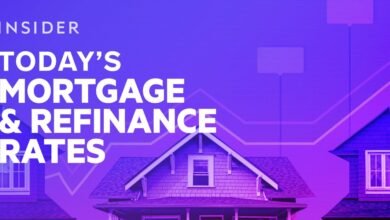The confronting number of Australians whose bills are more than their income

By Stephen Johnson, Economics Reporter For Daily Mail Australia
03:58 25 Mar 2024, updated 04:03 25 Mar 2024
A concerning number of Australians with a mortgage now have bills that are bigger than their income.
One in 20 borrowers now have negative cash flow where outgoings exceed their incomes, the Reserve Bank’s Financial Stability Review for March revealed.
‘Most borrowers remain able to service their debts and cover essential costs out of their income, despite their budgets being squeezed by higher interest rates and inflation,’ it said.
‘However, around five per cent of variable-rate owner-occupier borrowers are estimated to have had expenses exceed their income as interest rates and prices have risen over recent years, leading to an estimated cash flow shortfall.’
With the cash rate at a 12-year high of 4.35 per cent, the RBA warned borrowers would have to slash their spending to cope, with Governor Michele Bullock last week declaring it was still too soon to talk up the prospect of a rate cut.
‘Should inflation remain high for longer than forecast, the small number of borrowers who are close to or in cash flow shortfall would have to make further difficult adjustments to their finances in order to meet their obligations,’ the Reserve Bank report said.
The Reserve Bank also predicted three per cent of borrowers would have no savings by the end of next year if interest rates stayed high.
‘Despite greater budget pressures under the higher-for-longer scenario, we estimate that less than 3 per cent of variable-rate owner-occupier borrowers would be at risk of depleting their liquid savings buffers by the end of 2025,’ it said.
‘Mortgagers with low buffers and high leverage have been more likely to fall behind on their loan payments.’
The Reserve Bank said the high cash rate was a big factor causing negative cash flow, ahead of wages until recently lagging behind inflation, and unemployment.
A borrower with an average, $615,178 mortgage has, since May 2022, seen their monthly mortgage repayments surge by more than two-thirds, or 67.7 per cent.
The Reserve Bank’s 13th interest rate rise in 18 months, in November, meant the typical borrower was paying $3,966 a month, up $1,601 from $2,365 less than two years ago.
But less than one per cent of all home loans are 90 days or more in arrears – triggering a default on the loan – and only two per cent have repayments 30 days or more in arrears.
‘Strong conditions in the labour market, the large savings buffers accumulated by many borrowers during the pandemic and rising housing prices are helping households to adapt to challenging economic conditions,’ the RBA said.
‘Many households have made adjustments, including reducing their discretionary spending and saving, increasing their hours of work, and some have drawn down on saving buffers.’
Source link





